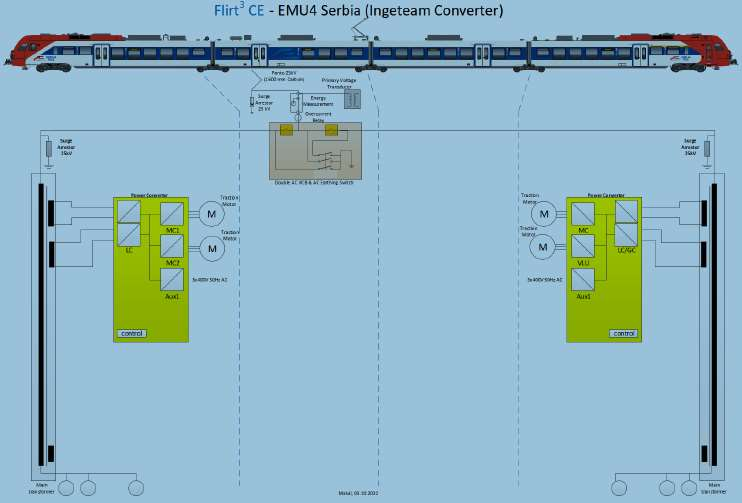First and second law analysis of crack propagation in canvas painting
Abstract
The knowledge of how the craquelures happen and their pattern on historical objects, especially paintings, is interested in the field of cultural heritage. Entropy generation and thermal analysis of crack growth are calculated numerically for the canvas painting. The painting is modeled as a three-layer composite with isotropic material properties. An in-house code is developed to model the plane strain elasto-static structural mechanics with hybrid-Trefftz finite element formulation. The results are benchmarked with numerical and analytical solutions. Entropy generation and temperature fields are simulated throughout stacking in mode I of a delamination process. The parameter study shows that the parameter of entropy has a great influence on the process of expectation of break proliferation in fast and low areas. It is likewise demonstrated that the use of the corruption entropy age hypothesis gives a technique for assessing the steady in the law of crack growth regarding the rate of entropy production.
References
[1]Bueckner HF. Novel principle for the computation of stress intensity factors. Zeitschrift fuer Angewandte Mathematik & Mechanik. 1970; 50: 129-146.
[2]Rice J. Some remarks on elastic crack-tip stress field. International Journal of Solids and Structures. 1972; 8: 751-758. doi: 10.1016/0020-7683(72)90040-6
[3]Baraff D, Witkin A. Large steps in cloth simulation. In: Proceedings of the 25th Annual Conference on Computer Graphics and Interactive Techniques—SIGGRAPH’98; 18-24 July 1998; Orlando, USA. doi: 10.1145/280814.280821
[4]Berger GA, Russell WH. Deterioration of Surfaces Exposed to Environmental Changes. Journal of the American Institute for Conservation. 1990; 29(1): 45-76. doi: 10.1179/019713690806046145
[5]Blinn JF. Simulation of wrinkled surfaces. In: Proceedings of the 5th Annual Conference on Computer Graphics and Interactive Techniques; 23-25 August 1978; Atlanta, Georgia, USA. doi: 10.1145/800248.507101
[6]Blinn JF, Newell ME. Texture and reflection in computer generated images. Communications of the ACM. 1976; 19(10): 542-547. doi: 10.1145/360349.360353
[7]Breen DE, House DH, Wozny MJ. Predicting the drape of woven cloth using interacting particles. In: Proceedings of the 21st Annual Conference on Computer Graphics and Interactive Techniques—SIGGRAPH’94; 24-29 July 1994; Orlando, Florida, USA. doi: 10.1145/192161.192259
[8]Carignan M, Yang Y, Thalmann NM, et al. Dressing animated synthetic actors with complex deformable clothes. ACM SIGGRAPH Computer Graphics. 1992; 26(2): 99-104. doi: 10.1145/142920.134017
[9]Chen Y, Lin S, Hua Z, et al. Realistic rendering and animation of knitwear. IEEE Transactions on Visualization and Computer Graphics. 2003; 9(1): 43-55. doi: 10.1109/tvcg.2003.1175096
[10]Cook RL. Shade trees. In: Proceedings of the 11th Annual Conference on Computer Graphics and Interactive Techniques; 23-27 July 1984; Minneapolis, Minnesota, USA. doi: 10.1145/800031.808602
[11]Cook RL, Carpenter L, Catmull E. The Reyes image rendering architecture. In: Proceedings of the 14th Annual Conference on Computer Graphics and Interactive Techniques; 27-31 July 1987; Anaheim, California, USA. doi: 10.1145/37401.37414
[12]Corel. Painter® Essentials 7 Quick Start Guide. Available online: https://product.corel.com/help/Painter-Essentials/540223061/Main/EN/Quick-Start-Guide/Painter-Essentials-Quick-Start-Guide.pdf (accessed on 12 January 2024).
[13]Daubert K, Seidel HP. Hardware-Based Volumetric Knit-Wear. Computer Graphics Forum. 2002; 21(3): 575-583. doi: 10.1111/1467-8659.t01-1-00708
[14]Daubert K, Lensch HPA, Heidrich W, Seidel H-P. Efficient cloth modeling and rendering. In: Proceedings of the 12th Eurographics Workshop on Rendering Techniques; 25-27 July 2001; London, UK.
[15]Flores JC. Entropy Signature for Crack Networks in Old Paintings: Saturation Prospectus. Entropy. 2018; 20(10): 772. doi: 10.3390/e20100772
[16]Lazarus V, Pauchard L. From craquelures to spiral crack patterns: influence of layer thickness on the crack patterns induced by desiccation. Soft Matter. 2011; 7(6): 2552. doi: 10.1039/c0sm00900h
[17]Loganina V, Fediuk R. Thermodynamic Approach to Assessing the Curing of Protective and Decorative Coatings of Exterior Walls of Buildings. Materials Science Forum. 2019; 974: 3-8. doi: 10.4028/www.scientific.net/msf.974.3
[18]Karimian SF, Bruck HA, Modarres M. Thermodynamic entropy to detect fatigue crack initiation using digital image correlation, and effect of overload spectrums. International Journal of Fatigue. 2019; 129: 105256. doi: 10.1016/j.ijfatigue.2019.105256
[19]Flores JC, Palma-Chilla L. Entropy behavior for isolated systems containing bounded and unbounded states: latent heat at the inflection point. Journal of Physics Communications. 2020; 4(3): 035002. doi: 10.1088/2399-6528/ab78df
[20]Agarwal N, Farris RJ. Thermodynamics of deformation of latex blend coatings and its implications for tailoring their properties. Journal of Coatings Technology. 1999; 71(9): 61-72. doi: 10.1007/bf02698385
[21]Hirshikesh, Natarajan S, Annabattula RK, et al. Trefftz polygonal finite element for linear elasticity: convergence, accuracy, and properties. Asia Pacific Journal on Computational Engineering. 2017; 4(1). doi: 10.1186/s40540-017-0020-3
[22]Ostoja-Starzewski M. Crack patterns in plates with randomly placed hole: A maximum entropy approach. Mechanics Research Communications. 2001; 28: 193-198. doi: 10.1016/S0093-6413(01)00162-8
[23]Hajshirmohammadi B, Khonsari MM. Thermographic evaluation of metal crack propagation during cyclic loading. Theoretical and Applied Fracture Mechanics. 2020; 105: 102385. doi: 10.1016/j.tafmec.2019.102385
[24]Hajshirmohammadi B, Khonsari MM. On the entropy of fatigue crack propagation. International Journal of Fatigue. 2020; 133: 105413. doi: 10.1016/j.ijfatigue.2019.105413
[25]Abdollahzadeh Jamalabadi MY. Optimal rectangular crack pattern based on constructal, fracture saturation, and energy minimization theories for painting on wood. Chaos, Solitons & Fractals. 2022; 160: 112242. doi: 10.1016/j.chaos.2022.112242
[26]Abdollahzadeh Jamalabadi MY. The Use of Artificial Intelligence for Image Processing of Crack Patterns in Panel Painting. Sumerianz Journal of Scientific Research. 2022; 51: 1-12. doi: 10.47752/sjsr.51.1.12
[27]Mohammad Yaghoub AJ. Paintings crack initiation time caused by microclimate. Annals of Mathematics and Physics. 2021; 4(1): 92-101. doi: 10.17352/amp.000028
[28]Abdollahzadeh Jamalabadi MY, Zabari N, Bratasz Ł. Three-dimensional numerical and experimental study of fracture saturation in panel paintings. Wood Science and Technology. 2021; 55(6): 1555-1576. doi: 10.1007/s00226-021-01328-z
Copyright (c) 2024 Mohammad Yaghoub Abdollahzadeh Jamalabadi

This work is licensed under a Creative Commons Attribution 4.0 International License.





.png)


